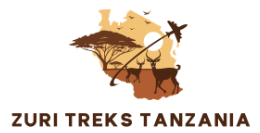Amboseli National Park- Travel Tips
What to See, How to Plan & Tours- Natural Scenery
- 7 Reviews
What is Amboseli National Park?
Located in southern Kenya’s Kajiado County, Amboseli National Park covers roughly 392 km² and lies just south of the Kenyan‑Tanzanian border. The name “Amboseli” comes from the Maasai term meaning a “salty, dusty place”, referencing the dry lake bed that forms part of its distinctive landscape. When the park was officially gazetted in 1974 it sought to protect a core ecosystem of swamps, open plains and acacia woodland at the foot of Mount Kilimanjaro.
The terrain includes alkaline lakebeds, marshy springs fed by the mountain’s melting ice, thorn‑bush country and open savanna. One of the defining visuals is Mount Kilimanjaro’s snow‑capped peak rising behind the park’s plains—a framing you won’t find in many other safari destinations.
Why visit Amboseli National Park?
First and foremost, Amboseli is world-renowned for its elephant population. It is home to some of the largest free-roaming herds in Africa, including bulls with exceptionally long tusks. The basin’s open terrain and relatively compact size make game-viewing especially accessible—even in a short stay you can see elephants, lions, giraffes, zebras and other iconic species.
Bird-lovers also benefit: more than 400 species of birds have been recorded, and the mix of habitats enhances the variety.
From a visual standpoint, the scene of elephants roaming the marshes with Mount Kilimanjaro behind them is iconic.
Beyond wildlife, visiting Amboseli offers a cultural dimension: the surrounding Maasai communities have long co-existed with the ecosystem, and some experiences link safari with local culture. Finally, for logistics, the park’s proximity to Nairobi makes it one of the more accessible safari destinations in Kenya, especially for those with limited time.
Planning your visit to Amboseli National Park
Getting there
- By road: the drive from Nairobi takes around 3–4 hours via Namanga or Emali to Kimana or Meshanani gates.
- By air: light-aircraft flights from Wilson Airport to a nearby airstrip are another option.
Best time to visit
- Driest months: typically June to October and December to February, providing clear views, good wildlife concentrations, and easier track access.
- Long rains: March–April, when some roads may be difficult and wildlife more dispersed.
What to expect
Because the park is relatively compact, you can cover a lot in 1–2 days: early morning and late afternoon game drives are recommended when animals are most active and light is favourable for photography.
Accommodation
- Options range from basic camps to high-end lodges inside or near the park.
- Choosing a stay facing Mount Kilimanjaro or near waterholes enhances the experience.
Conservation & culture etiquette
- Respect wildlife viewing rules (stay in vehicle or with a guide) and minimise disturbance.
- Engage respectfully with Maasai cultural experiences; your visit supports conservation and community livelihoods.
Amboseli Tours
Attractions in Kenya
- 1
- 2
- 3
- 4
- 13
Reviews of Amboseli
 Zuri Treks Tanzania *
Zuri Treks Tanzania * - 5
Amboseli is all about the breathtaking, unobstructed view of Mount Kilimanjaro, providing one of the most spectacular backdrops for wildlife viewing on the continent. The park is famous for its large elephant herds, and seeing these majestic animals stroll with the snow-capped peak in the distance is an unforgettable, picture-perfect moment. While the landscape can be dusty and the vegetation sparse, this actually makes spotting wildlife easier. The swamps and marshes fed by Kilimanjaro's springs are vibrant oases, attracting plenty of birds, hippos, and other animals. It can get crowded, but the sheer magic of that Kilimanjaro vista makes it an absolute must-visit.
 Majestic East Africa Tours *
Majestic East Africa Tours * - 5
Welcome to Amboseli National Park, where breathtaking landscapes and unforgettable wildlife encounters await! Famous for its stunning views of Mount Kilimanjaro, Africa's highest peak, Amboseli offers a truly iconic safari experience. Here, you'll witness majestic elephants roaming freely against the backdrop of snow-capped Kilimanjaro—a photographer's dream! The park is also home to lions, cheetahs, giraffes, and countless bird species, making every game drive an adventure. Beyond wildlife, Amboseli's vast savannahs and swamps create a diverse ecosystem, while the rich Maasai culture adds a unique cultural touch to your journey.
+1 Photos Clement Kathinja
Clement Kathinja - 5
Amboseli National Park, located in southern Kenya, is renowned for its stunning landscapes and abundant wildlife. Nestled at the base of Mount Kilimanjaro, the park offers breathtaking views of Africa's highest peak, creating a dramatic backdrop for wildlife photography. The park spans approximately 392 square kilometers and is characterized by its diverse habitats, including open savannahs, lush swamps, and arid plains. One of Amboseli’s most notable features is its large population of African elephants, which are often seen roaming freely across the park. The elephants are a major attraction, and their interactions and behaviors are closely studied by researchers and admired by visitors. In addition to elephants, Amboseli is home to a variety of other wildlife, including lions, cheetahs, giraffes, zebras, and numerous bird species, making it a prime destination for safari enthusiasts. The park is also vital for its role in local conservation efforts and community projects, supporting both wildlife and local Maasai communities. Visitors to Amboseli can enjoy guided game drives, cultural experiences with the Maasai, and the park’s unique ecosystem, making it a memorable destination for nature lovers and adventurers alike.
 Mohammed Bin Mahfooz
Mohammed Bin Mahfooz - 5
Another jungle visit and this was is much different than Masai Mara, the weather here was warmer and air seemed to be more dusty. The visibility here much clearer as no tall grasses. Lots of species spotted, waited almost for an hour to watch a Lion attack a herd of zebras but didn’t happen as the bird warned the zebras away. Mount Kilimanjaro was visible from a distance.
 Ido Isler
Ido Isler - 4
An amazing safari park. things I liked: it's a relatively small park, the drivers corporate with each other and stay on the roads without disturbing the animals, it's very easy to see elephants, zebras, giraffes, antelopes, wort hogs and wildebeests. you might also see lions,ostriches and Hippos if you're lucky.
 Lyndsay Gordon
Lyndsay Gordon - 5
While you can't go off road like some other areas - the animals still come right up to the vehicle. This is a birder's paradise as well, especially for wetland birds.
 L V
L V - 5
Fantastic National Park covering hundreds of square kilometers. Beautiful grasslands surrounded by mountains. Abundant wildlife sightings during safari. Many roads crisscrossing the park. A lot of elephants, zebras, flamingos, gazelles, giraffes, hippos, wildebeests, and other water birds. The views of Mt.Kilimanjaro are amazing. There are big wildcats like lions and cheetahs, but we did not see them during our three day stay.



